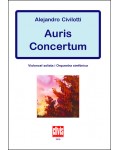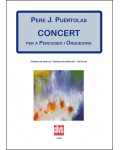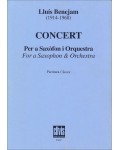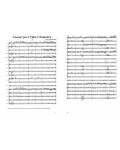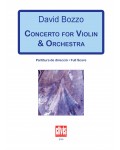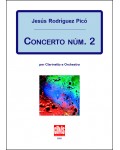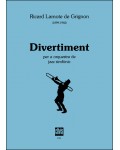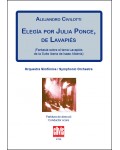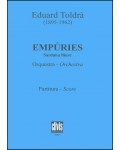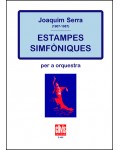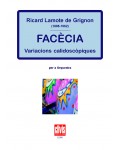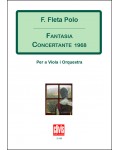
No products
Prices are tax included
Product successfully added to your shopping cart
There are 0 items in your cart. There is 1 item in your cart.
- English
- Castellano
- Català
Symphonic Orchestra There are 45 products.

Subcategories
-
Auris Concertum
Edition: DigitalThe play Auris Concertum by Alejandro Civilotti is a hymn about return to the world of sounds.
23,27 € -
Concert per a percussió i orquestra
Edition: DigitalThe Concert for Percussion and Orchestra by Pere J. Puértolas is a concert with a classical bent in three movements: Allegro, Andante moderato and Allegro con fuoco, and the brilliance of the soloist and, indeed, the whole orchestra is evident from the first few bars.
18,15 € -
Concerto for saxophone and orchestra
Edition: DigitalConcerto for Saxophone and Orchestra stems from the orchestration that made Lluís Benejam of one of his compositions, the Sonata for Saxophone and Piano, one of the most brilliant works of the author.
35,95 € -
-
Concerto for Violin & Orchestra
Edition: DigitalFirst and last movements of this Concerto by David Bozzo are made with the same thematic material and with a similar formal structure, like a house from where one leaves and where one returns.
21,78 € -
Concerto núm. 2 per Clarinetto e Orchestra
Edition: DigitalThere is a certain degree of continuity between the Concerto Nr. 1 for clarinet and orchestra (1989) and the Concerto Nr. 2 (1990), and they in fact have many similarities, such as the relationship that is established between the orchestra and the solo clarinet, the use of expressive clarinet passages of great technical complexity, and also thematic...
16,29 € -
Divertiment
Edition: DigitalThe structure of this Divertimento for orchestra of symphonic jazz is as follows: The 1st movement is an Allegro, with a joyful Fox rhythm; The 2nd movement, Moderato, has a Waltz time; The 3rd movement has a Slow tempo; Finally, the last movement is an Allegro molto, with a Ragtime rhythm.
21,81 € -
Elegía por Julia Ponce, de Lavapiés
Edition: DigitalThis work of Civilotti shows remarkable imaginative individuality, with a stable emotional atmosphere, and management of unreleased sounds that trap the attention until the end.Jorge Aráoz Badí
17,85 € -
Empúries
Edition: DigitalEmpúries, the ancient Greek villa situated in the northeast of Catalonia, has been a source of inspiration for numerous artistic works, and especially of musical works.
19,94 € -
Estampes simfòniques
Edition: DigitalEstampes Simfòniques has two parts: Danza Gitana and Fiesta Andaluza. The second movement is structured around a nocturnal air, while the centre of the first movement contains a habanera rhythm.
18,15 € -
Facècia
Edition: DigitalThe work Facècia reflects the humorous and light-hearted nature that the title announces but the latter conceals a very elaborate work based on variation and counterpoint. The original piece hails from Ampurdan in Catalonia, and is dealt with ten times, using traditional variation resources: extension, diminution, retrogression, inversion, glosa, etc.
21,18 € -
Fantasia Concertante 1968
Edition: DigitalThe piece Fantasia Concertante, which is structured as a single movement, fits perfectly into the fantasia genre: a free discourse from the solo instrument which, in spite of being based on an initial theme, includes various themes by way of improvisation.
18,15 €


